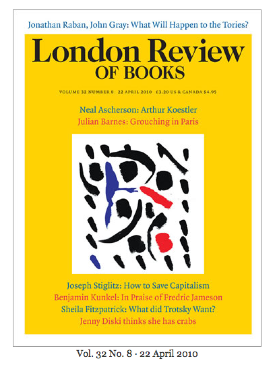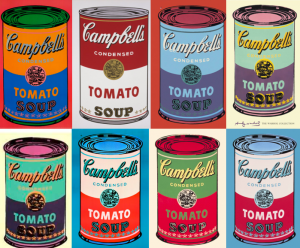i. Making a Better Soup Can
As though in response to last week’s Digest post, this past week Gigantic co-editor Lincoln Michel added to Genoways, Nicorvo, and co.’s informal and ongoing discussion about literary magazines and literary fiction in his own piece at Faster Times. Michel writes on the subject:
When we started Gigantic we put a lot of effort into our design, literary aesthetic and concept and I think people took notice much more than they would have if we looked and read like every other magazine. Or look at how a simple yet unique concept made One Story instantly known in the lit world.
If a literary magazine is going to cost as much as a novel, it should feel as permanent. You should want to keep it on your shelf next to your other favorite books. How many magazines achieve that? There are a few that do (NOON, McSweeney’s, Tin House, A Public Space or Genoways’s own VQR are all good examples) but far too many magazines feel completely disposable. One issue isn’t distinguished from the next and one magazine isn’t distinguishable from another.
 Sounds accurate to me, in that there are many magazines that are redundant and won’t be remembered. (Anyone have a copy of The Kingdom of Slender Swords around?) And Gigantic is publishing some interesting stuff. What I’m starting to wonder is: Why is this discussion sticking solely to fiction and nonfiction? What about poetry, graphic work, and so on? Or is poetry’s absence from the conversation an argument itself?
Sounds accurate to me, in that there are many magazines that are redundant and won’t be remembered. (Anyone have a copy of The Kingdom of Slender Swords around?) And Gigantic is publishing some interesting stuff. What I’m starting to wonder is: Why is this discussion sticking solely to fiction and nonfiction? What about poetry, graphic work, and so on? Or is poetry’s absence from the conversation an argument itself?
ii. For You People Behind the Curtain
If you haven’t yet heard about Submishmash, read this interview with Submishmash’s Michael Fitzgerald conducted by Adam Robinson of Publishing Genius. Adam uses Submishmash. So do we. Seems like many of these things (such as the One Story submission manager), only this one is, well—free. Here’s Fitzgerald on their mission:
Submishmash wants to save the entire industry time, money, and energy. If you think about it: if 100s of publishers use these tools, they will collectively save hundreds of thousands of hours and dollars. This will result in happier editors, writers, and readers. It will result in a better literature, thus richer lives. People can be as snarky as they want about this, but our ambition is to make a big difference, to help literature through cheap, simple, and smart tools.
(Where do I sign up, right?)
GOOD magazine reports on “A Magazine That’s Actually Growing.”
This article from Publishing Perspectives makes me contemplate how much literary magazine publishing should be involved with the empowering of the disenfranchised—or, as Joseph Conrad said, giving a voice to the voiceless.
 How many literary magazines ever, in the past or the future—I mean ever — get digs like the new ones being built for staff of Poetry?
How many literary magazines ever, in the past or the future—I mean ever — get digs like the new ones being built for staff of Poetry?
The 22,000-square-foot building being constructed at the intersection of Dearborn and Superior streets was designed by the Chicago firm John Ronan Architects. Visitors will enter the building by walking through a garden that is conceived of as an urban sanctuary, a space that, in the words of the architect, “mediates between the street and the building, blurring the hard distinctions between public and private.”
Finally, Jay Baron Nicorvo (the same one mentioned above) is leaving CLMP for other adventures. His constant help and insight will be missed by many in the small press world. (He helped me more than once at a variety of magazines.) So: Anyone up for taking on the role of Membership Director?
Every Tuesday, Travis Kurowski presents Luna Digest, a selection of news from the world of literary magazines. Travis is the editor of Luna Park, a magazine founded on the idea that journals are as deserving of critical attention as other artistic works.

No Comments
Leave a Comment
trackback address